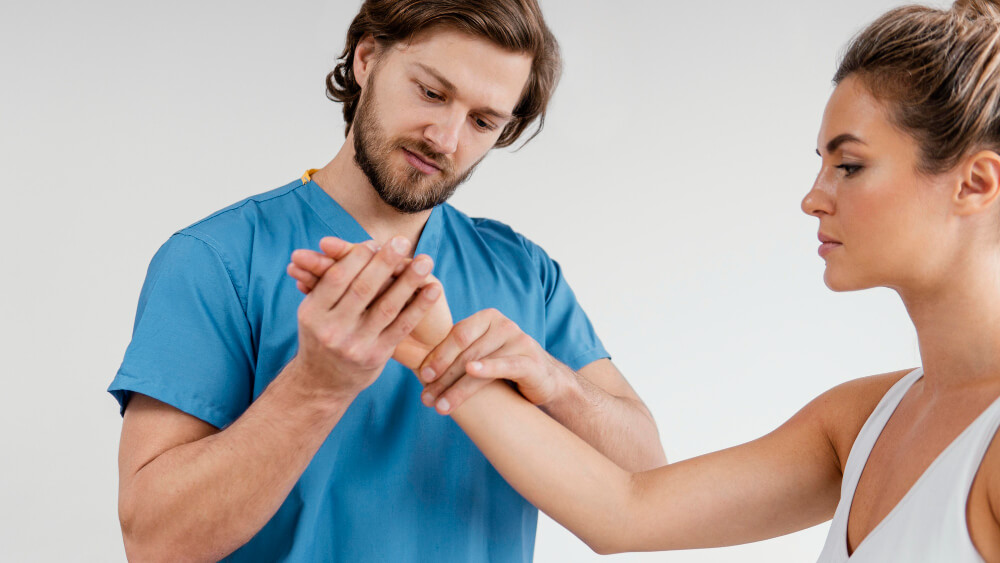Taming the Tendons: Understanding and Treating Tendinitis and Tendinopathy
Living an active life often puts stress on our bodies, particularly on our tendons. These fibrous tissues connect muscles to bones, facilitating movement and stability. However, overuse or improper mechanics can lead to inflammation or degeneration in these tendons, resulting in the conditions known as tendonitis and tendinopathy.
Understanding the Difference: Tendinitis vs. Tendinopathy
While both terms signify tendon issues, they represent distinct scenarios:
Tendinitis
- Acute inflammation characterized by pain, swelling, and tenderness around the affected tendon.
- Often arises from sudden or repetitive overuse of a particular muscle group.
- Examples include tennis elbow, golfer’s elbow, and runner’s knee.
Tendinopathy
- Microscopic degeneration within the tendon itself, not necessarily involving inflammation.
- Develops gradually due to chronic overuse or poor biomechanics.
- Often presents as a deep ache, stiffness, and weakness in the affected area.
- Examples include Achilles tendinopathy, patellar tendinopathy, and rotator cuff tendinopathy.
Identifying the Culprit: Common Causes of Tendon Problems
Several factors can contribute to tendonitis and tendinopathy:
- Repetitive motions: Engaging in the same activity repeatedly, like throwing a baseball or typing on a keyboard, can overload specific tendons.
- Improper technique: Lack of proper form during exercise or physical activities can increase stress on tendons.
- Inadequate warm-up: Neglecting to warm up muscles before strenuous activity can make tendons more susceptible to injury.
- Age and overuse: As we age, tendons naturally lose elasticity and become more prone to damage.
- Underlying conditions: Certain medical conditions like arthritis or diabetes can weaken tendons.
Feeling the Ache: Recognizing the Symptoms of Tendonitis and Tendinopathy
While specific symptoms may vary based on the affected tendon, common signs include:
- Pain: Localized pain, particularly during movement or when touching the affected area.
- Tenderness: Increased sensitivity to pressure around the tendon.
- Swelling: Noticeable puffiness or fluid buildup at the injury site.
- Stiffness: Reduced flexibility and difficulty moving the affected joint.
- Weakness: Decreased strength in the muscles connected to the injured tendon.
Seeking Relief: Exploring Treatment Options for Tendonitis and Tendinopathy
Fortunately, various treatment options can help manage and potentially reverse tendon issues. The most suitable approach depends on the severity and nature of the condition.
Non-Surgical Approaches
- Rest: Reducing or modifying activities that aggravate the tendon allows for healing to occur.
- Ice therapy: Applying ice packs to the affected area helps reduce inflammation and pain.
- Heat therapy: Using heat packs or warm compresses can increase blood flow and promote healing in chronic cases.
- Compression: Wearing wraps or braces can provide support and stability to the injured tendon.
- Nonsteroidal anti-inflammatory drugs (NSAIDs): Over-the-counter medications like ibuprofen can help manage pain and inflammation.
- Physical therapy: Guided exercises focus on strengthening muscles, improving flexibility, and correcting biomechanics to prevent future issues.
- Shockwave therapy: This non-invasive technique uses sound waves to stimulate blood flow and promote healing.
- Platelet-rich plasma (PRP) injections: Injecting concentrated platelets from the patient’s own blood may accelerate healing in some cases.
Surgical Intervention (Last Resort)
In rare instances when non-surgical approaches fail to provide relief, surgery may be considered to repair or remove damaged tendon tissue. However, this option is typically reserved for severe or chronic cases.
Preventing the Pain: Tips for Protecting Your Tendons
By incorporating simple practices into your daily routine, you can minimize your risk of developing tendon problems:
- Warm up and cool down properly before and after exercise.
- Maintain good posture and proper form during activities.


